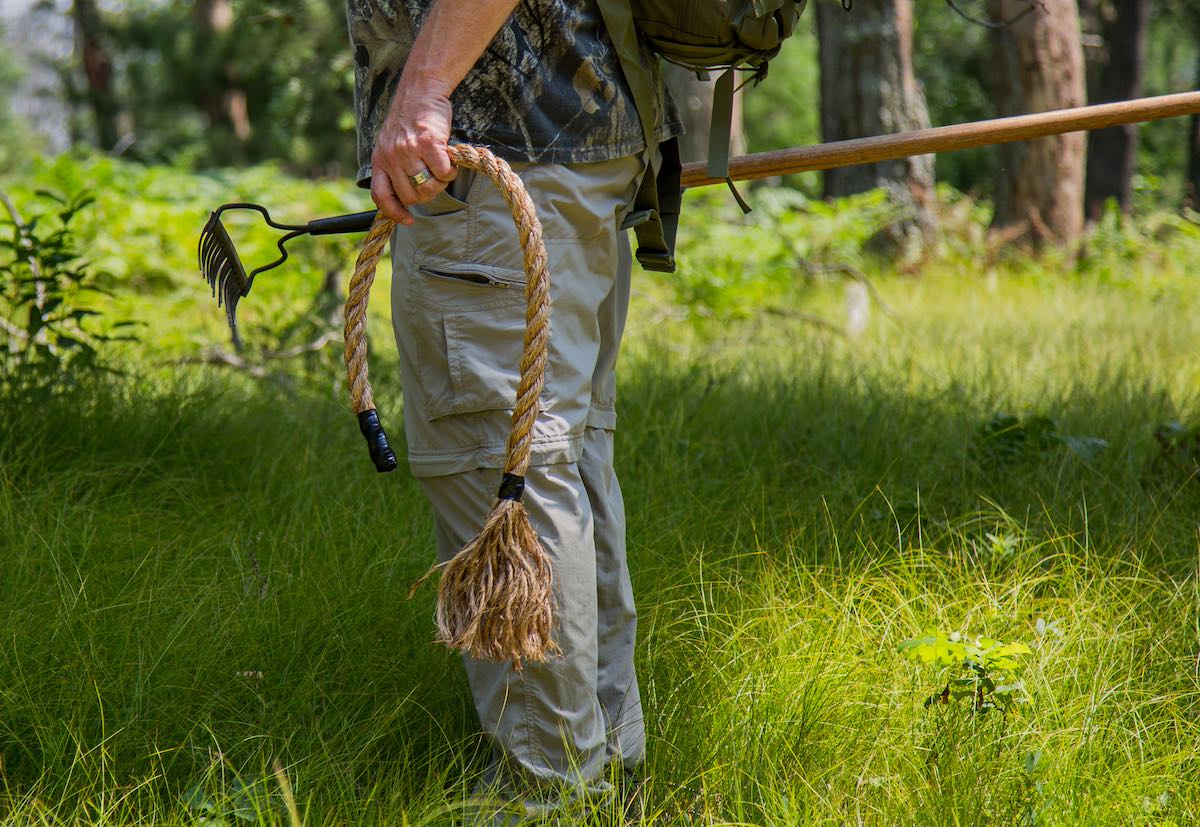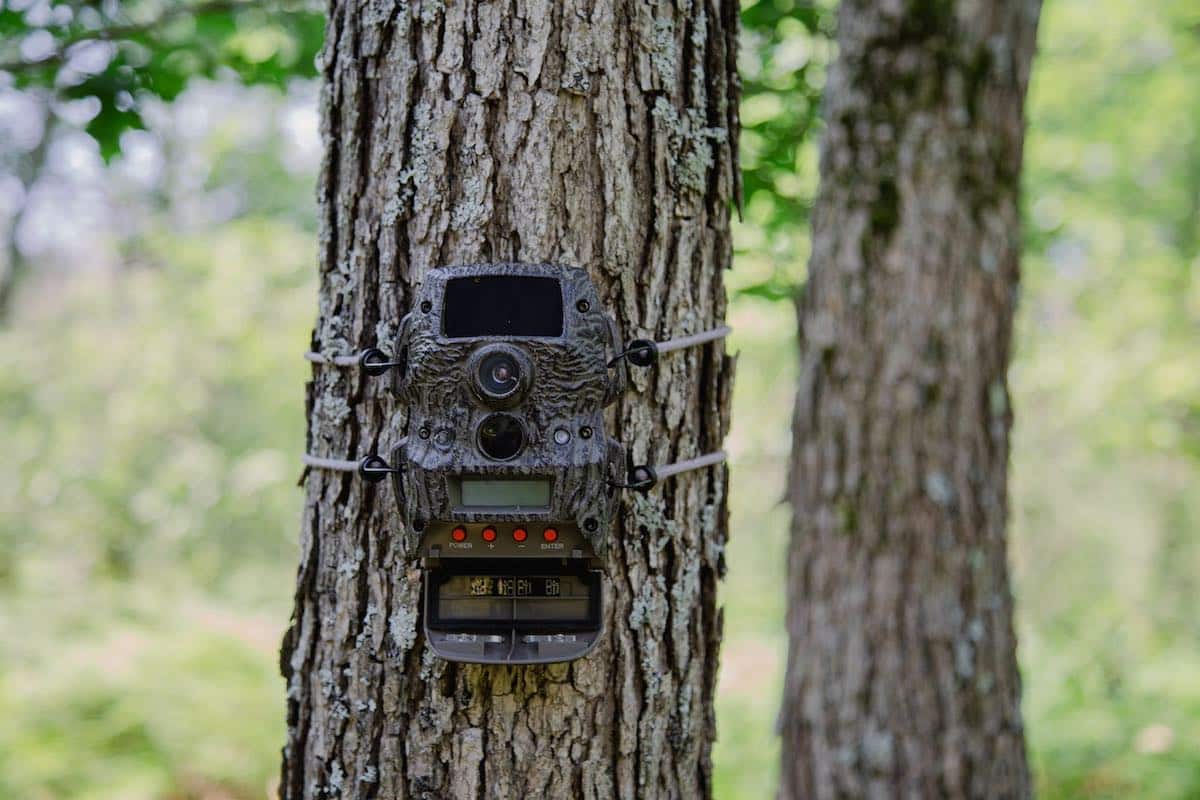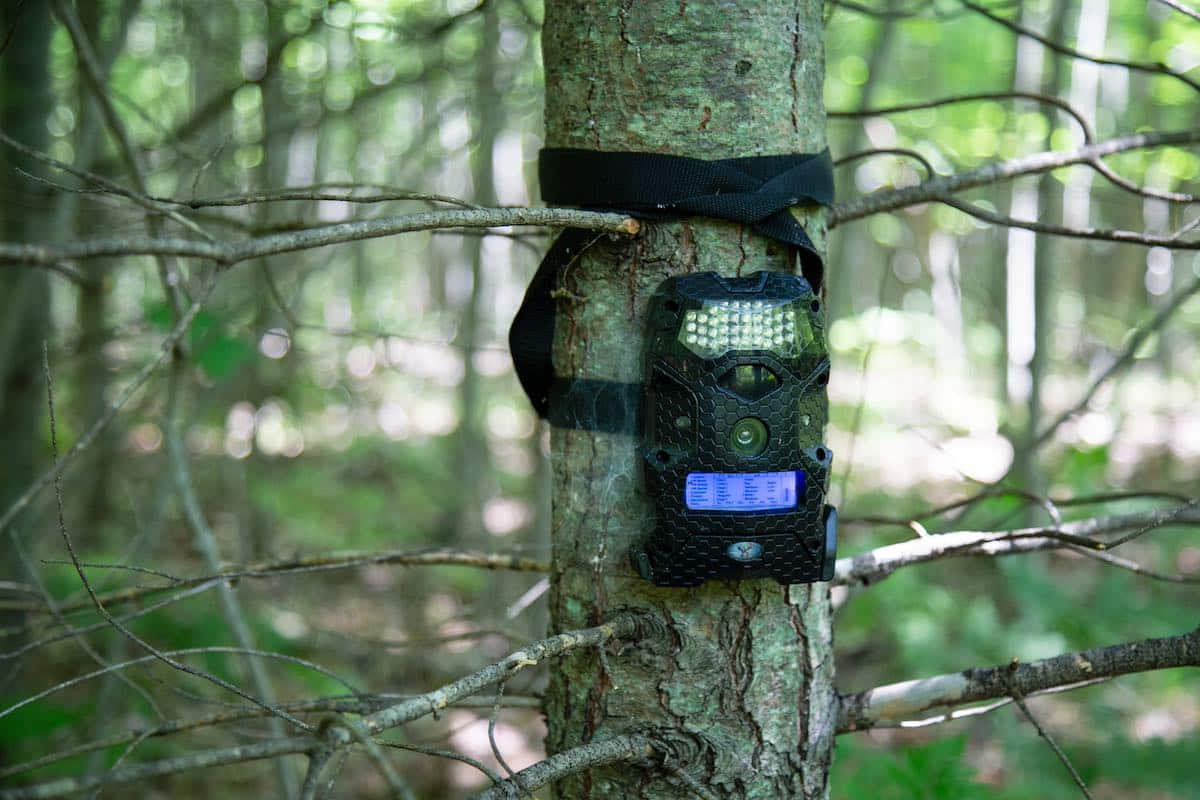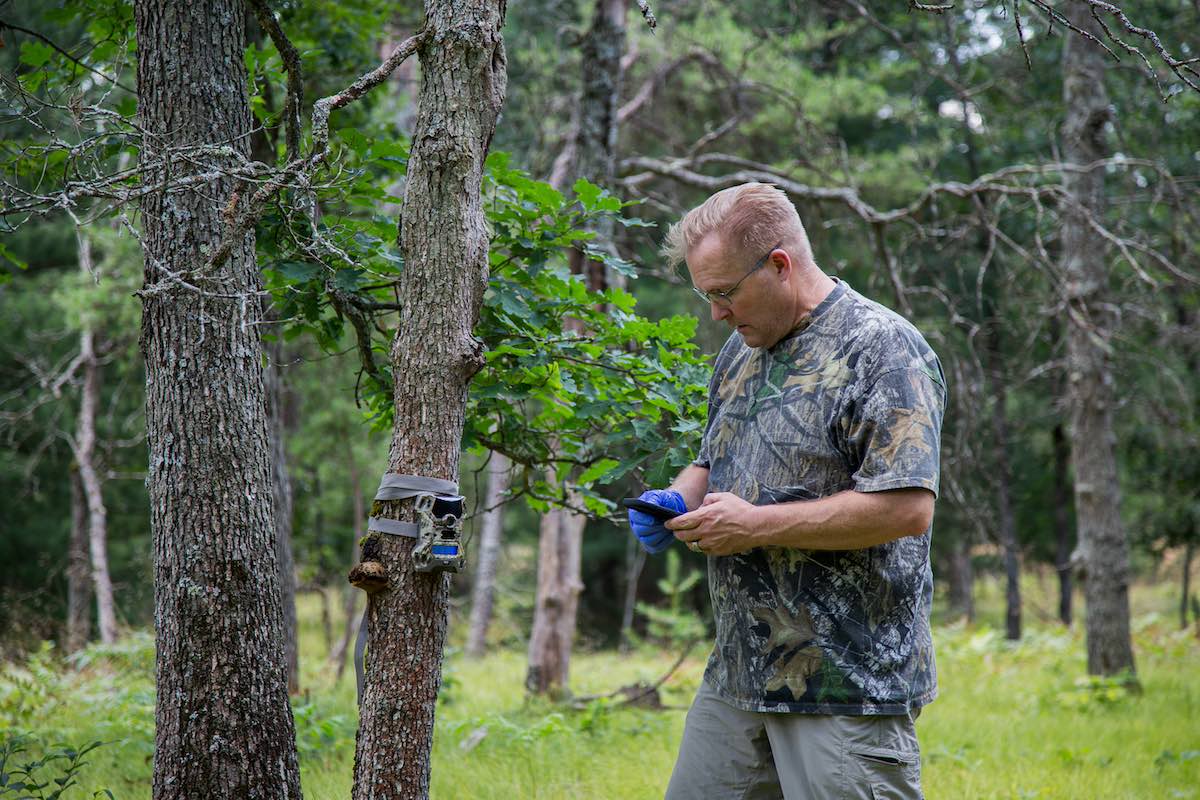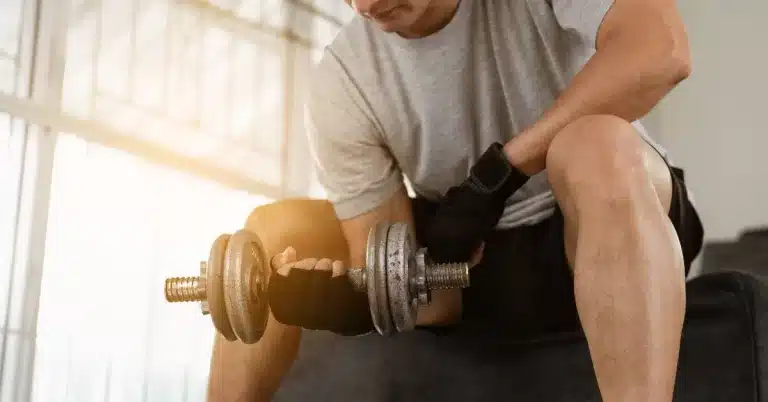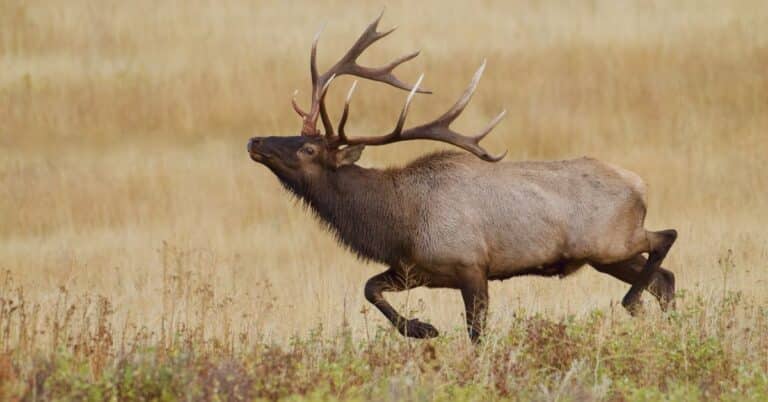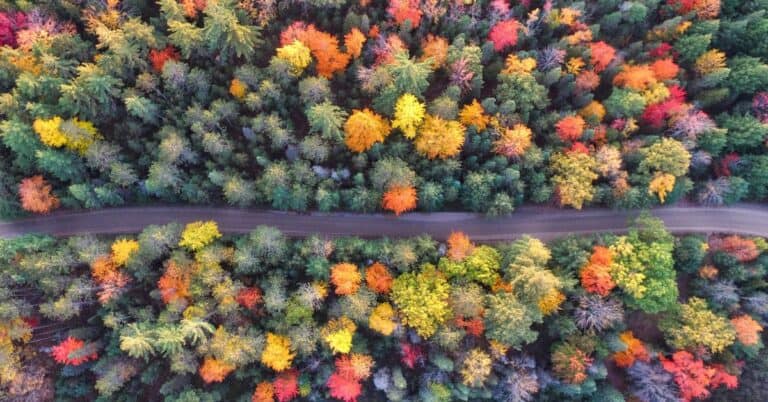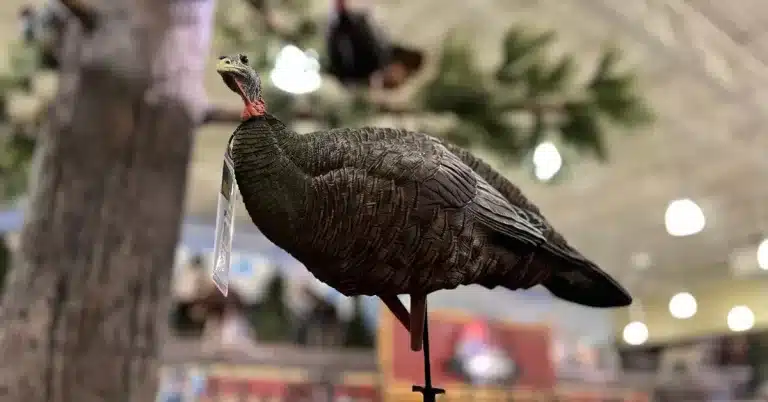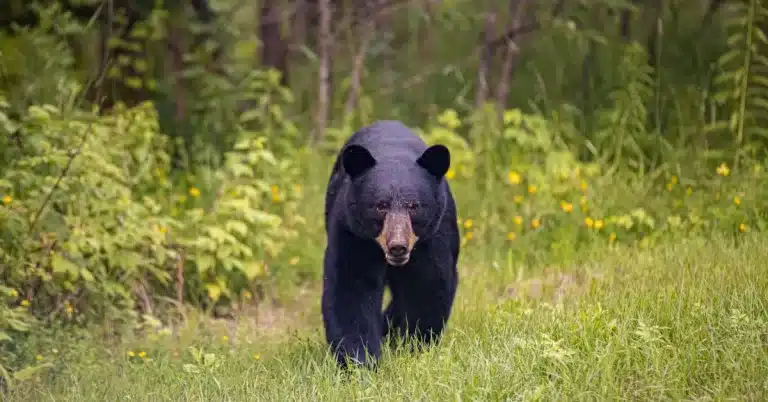How to Make a Mock Scrape with a Rope for Deer
Are you new to hunting and wondering about mock scrapes? Creating a mock scrape with a rope can be a game-changer for attracting whitetail deer to your hunting area. In this article, I’ll share my step-by-step process, tips, and personal experiences to help you create an effective mock scrape using a rope and buck lure scent.
What is a Mock Scrape?
A mock scrape is something hunters create to attract deer. In nature, deer make scrapes to communicate with each other, especially during the rutting season when bucks are looking for does. A natural scrape is a patch of bare ground under an overhanging branch. Bucks use their hooves to clear the ground, urinate on it, and rub their preorbital glands (located between their eyes and antlers) on the branch to leave their scent. This tells other deer they’ve been there and marks their territory.
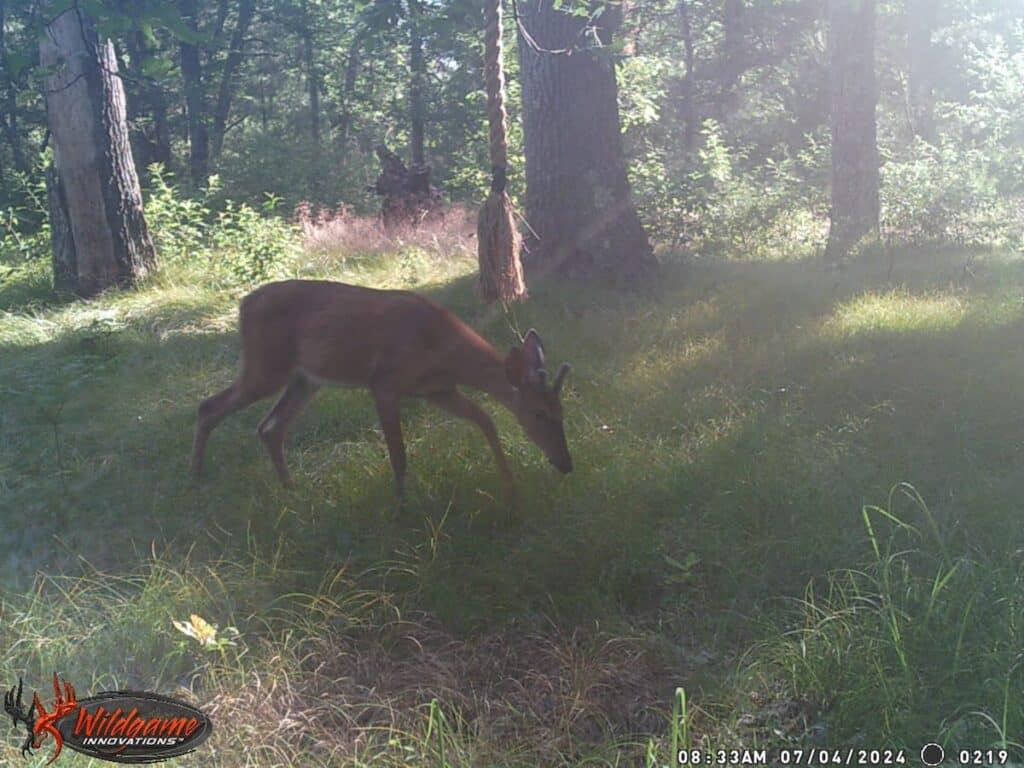
Creating a mock scrape involves choosing a good spot where deer already travel. I look for trees with low branches near these deer paths. Then, I hang a rope treated with a preorbital gland scent and clear the ground beneath it. The scent mimics what deer naturally do, tricking them into thinking another deer has been there.
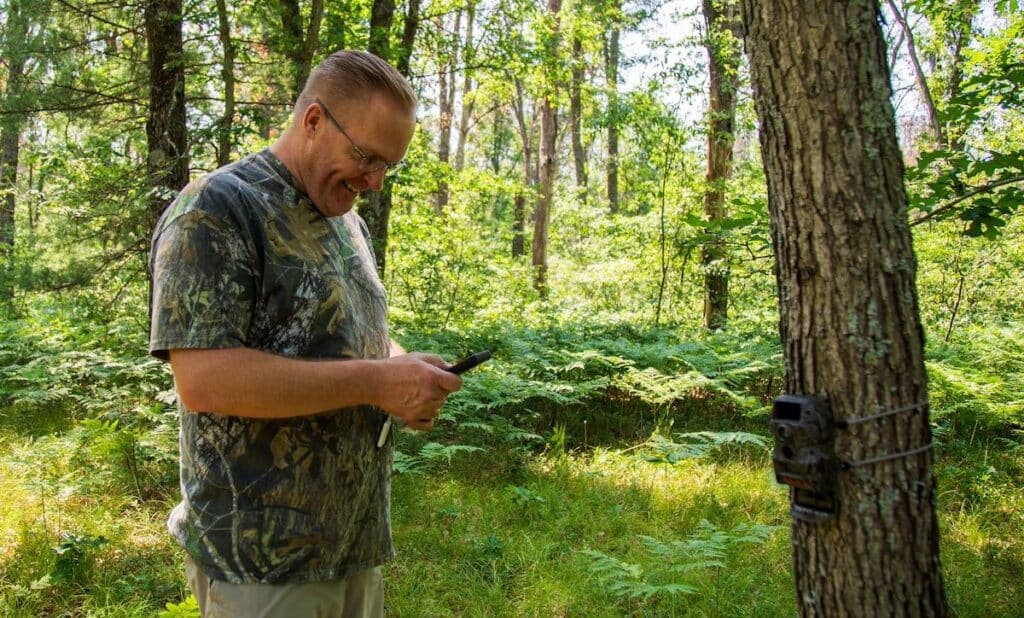
The purpose of a mock scrape is to draw deer to a specific spot. It helps me see which deer are in the area through my trail cameras and increases my chances of finding deer during hunting season. By keeping the mock scrape fresh with a new scent, I keep the deer interested and coming back, which boosts my chances of a successful hunt.
Choosing Between Rope and Natural Vines for Your Mock Scrape
When setting up a mock scrape, you have options for what to hang from the tree. I prefer a manila rope, but others may prefer hemp rope, a vine, or a branch. Manila rope is durable, holds scent well, and looks natural hanging from a tree. It’s also easy to find, simple to set up, and very effective at attracting deer.
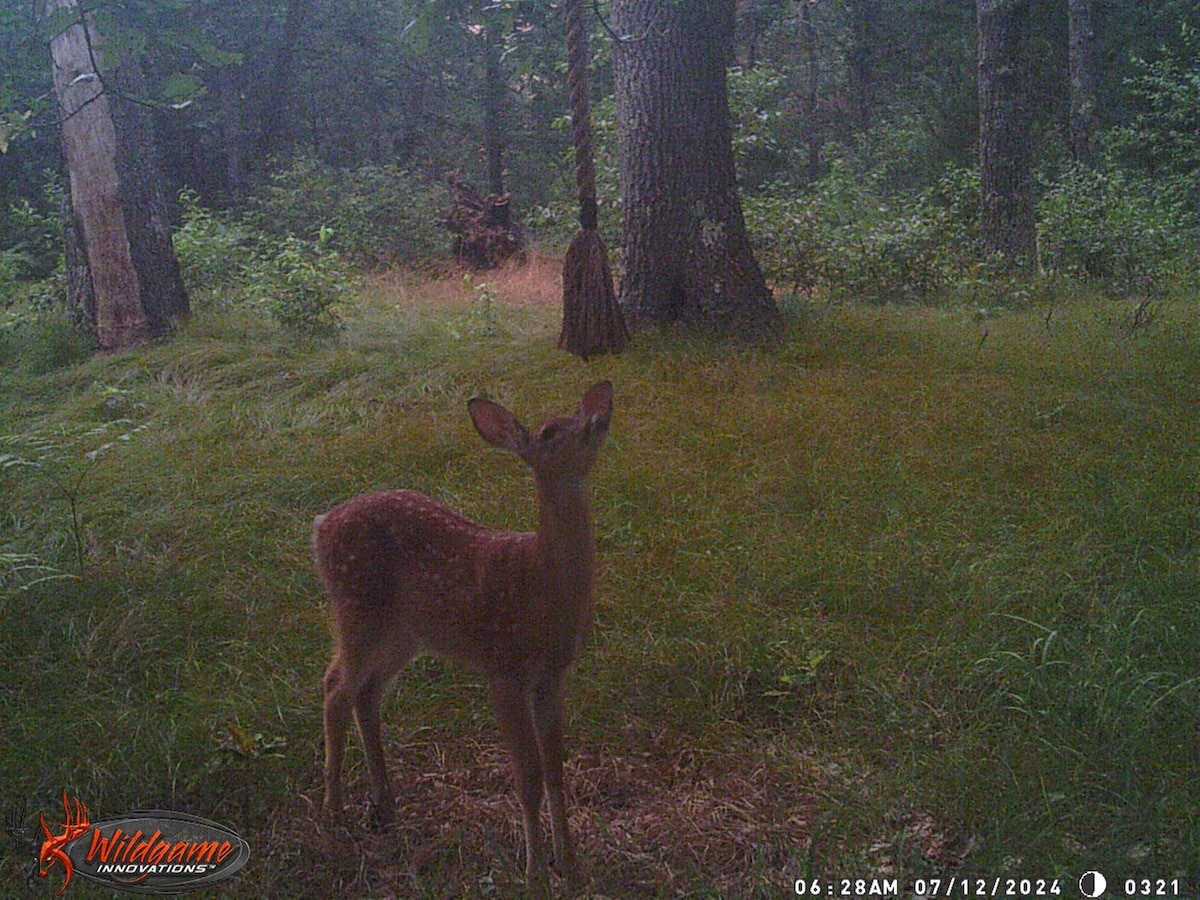
Some hunters prefer hemp rope or natural vines. A vine can blend seamlessly into the environment and mimic what deer might find naturally. However, I’m severely allergic to poison ivy and despite knowing exactly what it looks like, I’d rather not risk exploring my hunting area for a vine and accidentally coming in contact with poison ivy. I also think that a rope is quicker to install. I can prepare it and have it ready before I walk into the woods. This shortens the time it takes me and I disturb my hunting area less with human scent.
What is the Best Rope for a Tree Feeling?
The best rope for creating a mock scrape is the Manila rope. But hemp rope also works well. It closely resembles natural materials, blends into the environment, and has a rough texture that absorbs and holds deer scents effectively. Manila rope is durable and weather-resistant, making it ideal for outdoor use throughout the hunting season.
How To Make a Mock Scrape with a Rope: Step by Step
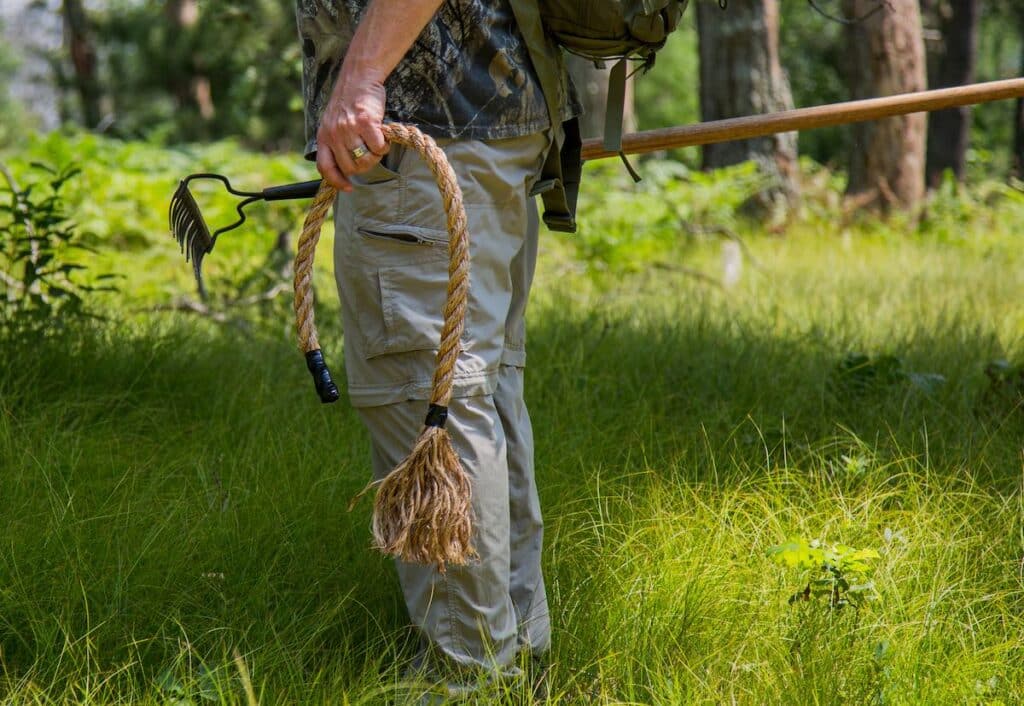
Step 1: Purchase manila rope
I found 1” natural Manila rope at the Home Depot store near me. Natural ropes like hemp can also work well.
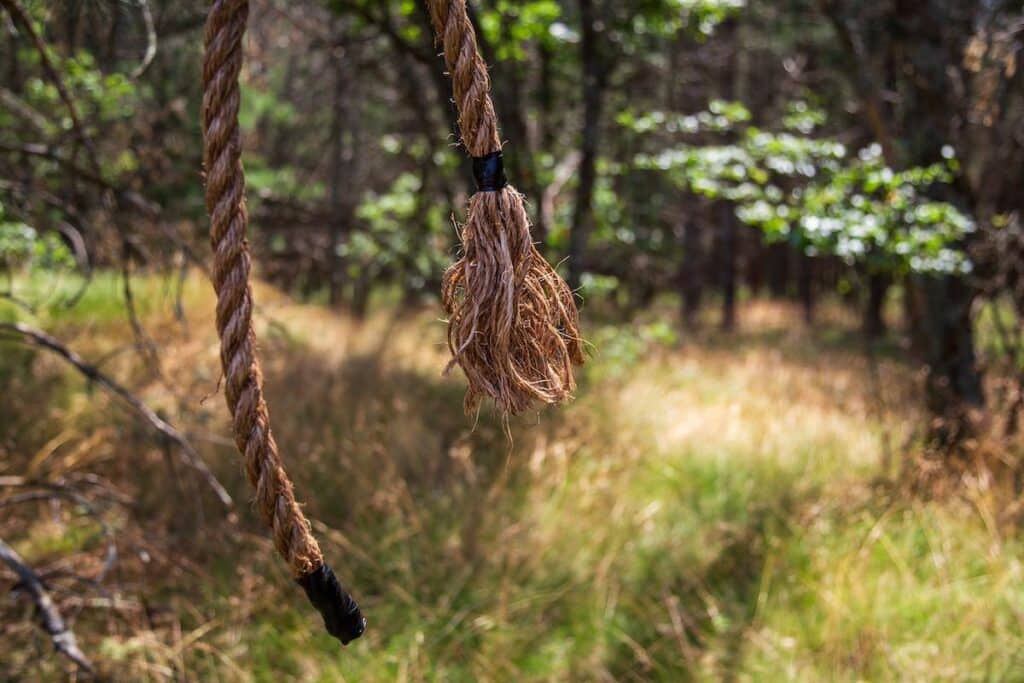
Step 2: Prepare the rope.
I cut it into 4-foot lengths and prepared one end with black electrical tape to keep it from fraying. This end will be attached to the tree in a future step.
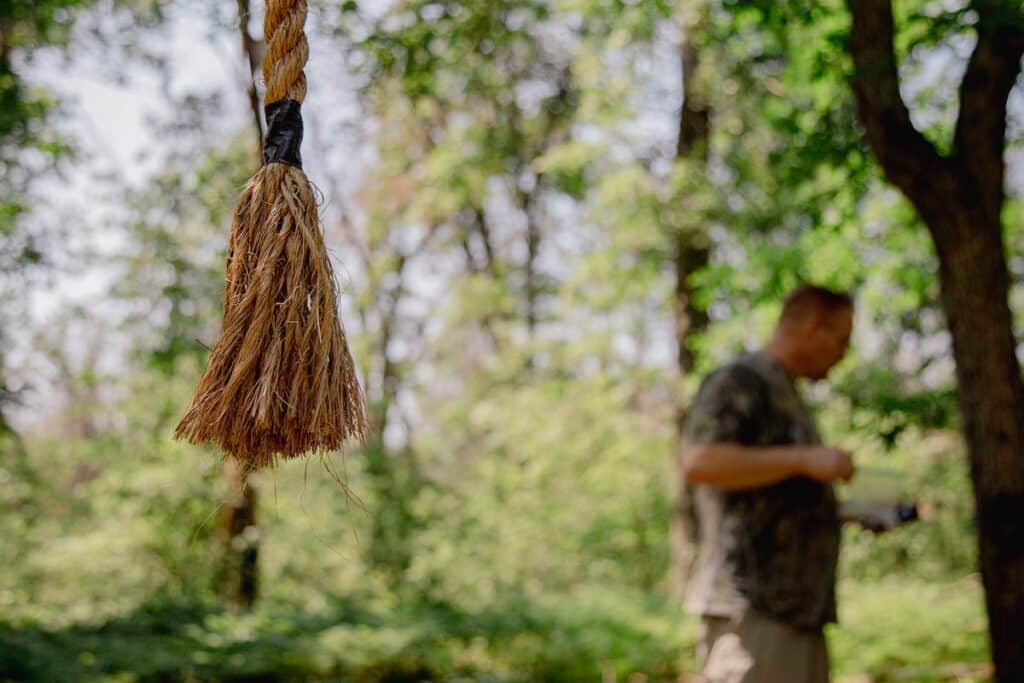
Step 3: Fray one End
To give the rope a more natural appearance, I unravel the end of the twisted Manila rope. This frayed look mimics natural vines or branches in the wild. Six inches from the frayed end, I attach more electric tape to keep it from unraveling.
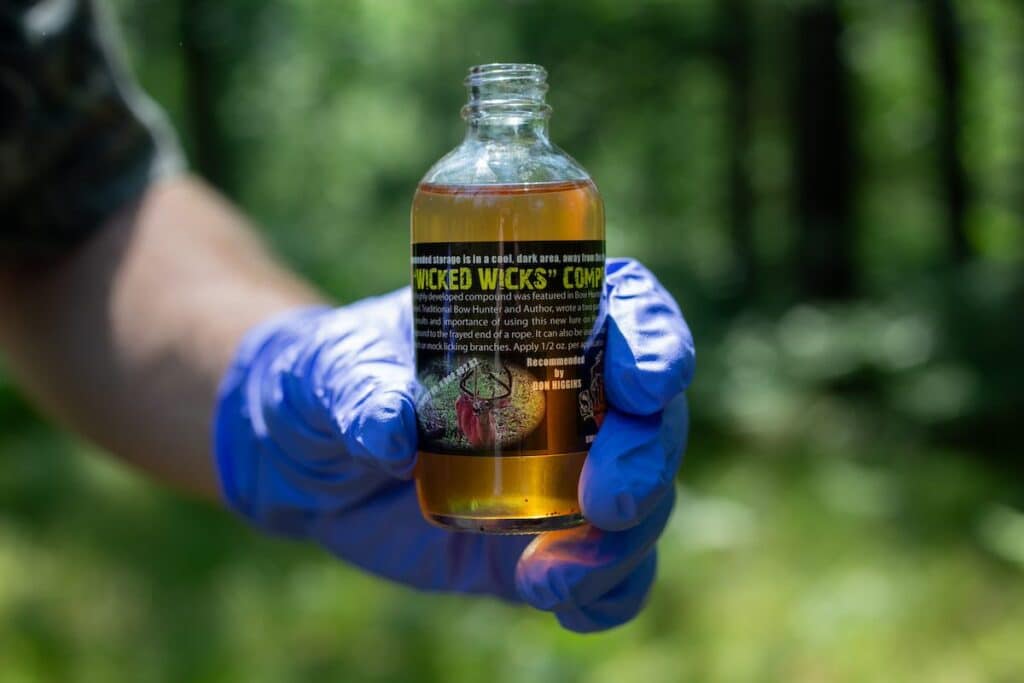
Step 4: Purchase pre-orbital gland product.
I recommend Smokey’s Wicked Wicks compound. It’s a little expensive, but I did extensive research and it has produced quick results for me this year!
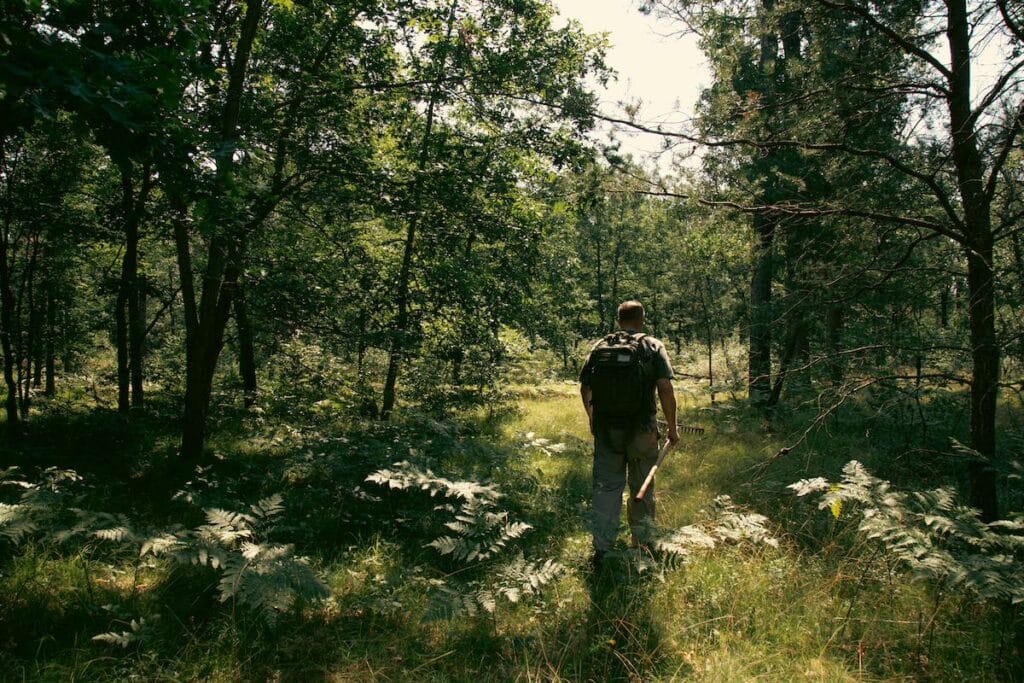
Step 5: Select a location.
Choose a spot near established deer runs. These are defined paths that deer frequently travel, often visible due to trampled vegetation. Look for trees that are in open areas or clearings.
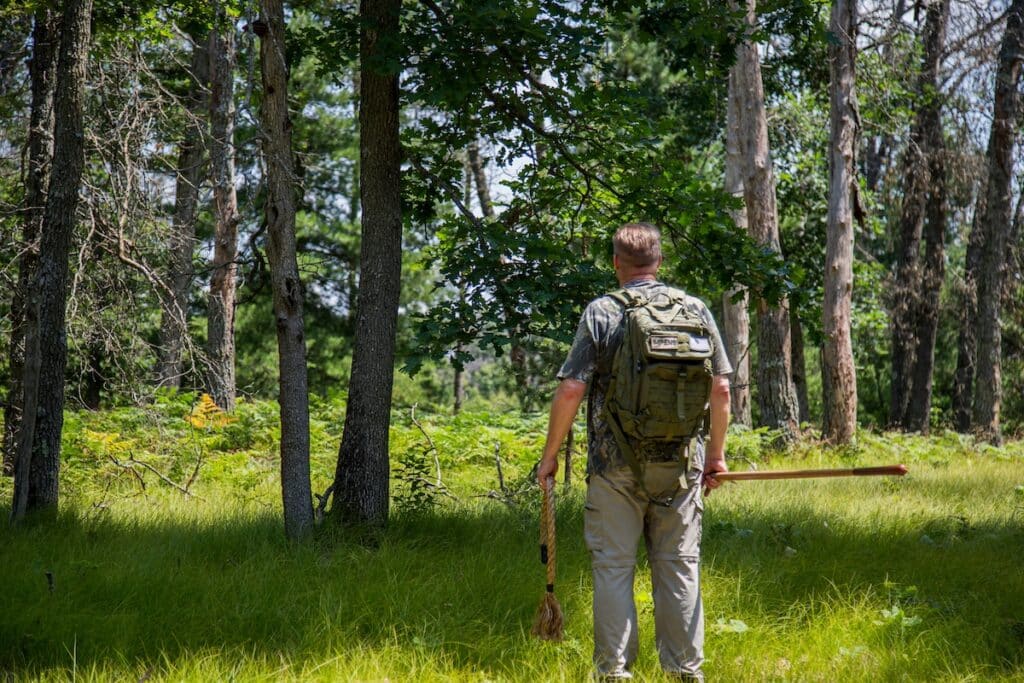
Step 6: Pick a tree.
Next, I find a tree with a sturdy branch about 4-5 feet off the ground. This branch will hold the rope. The branch should be sturdy enough to hold the rope securely but low enough for deer to reach easily.
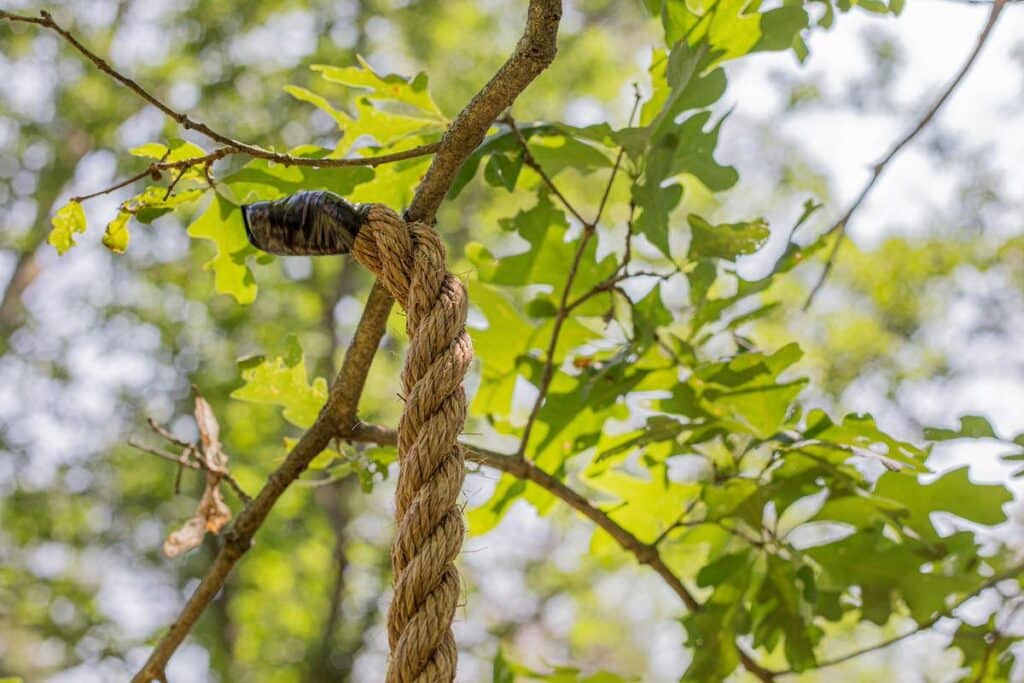
Step 7: Attach the rope
I use a length of Manila rope and secure it to the branch with a zip tie. The rope should hang down to about 3 feet off the ground. That’s about waist-high by my belly button. Manila rope is durable and holds scent well, making it ideal.
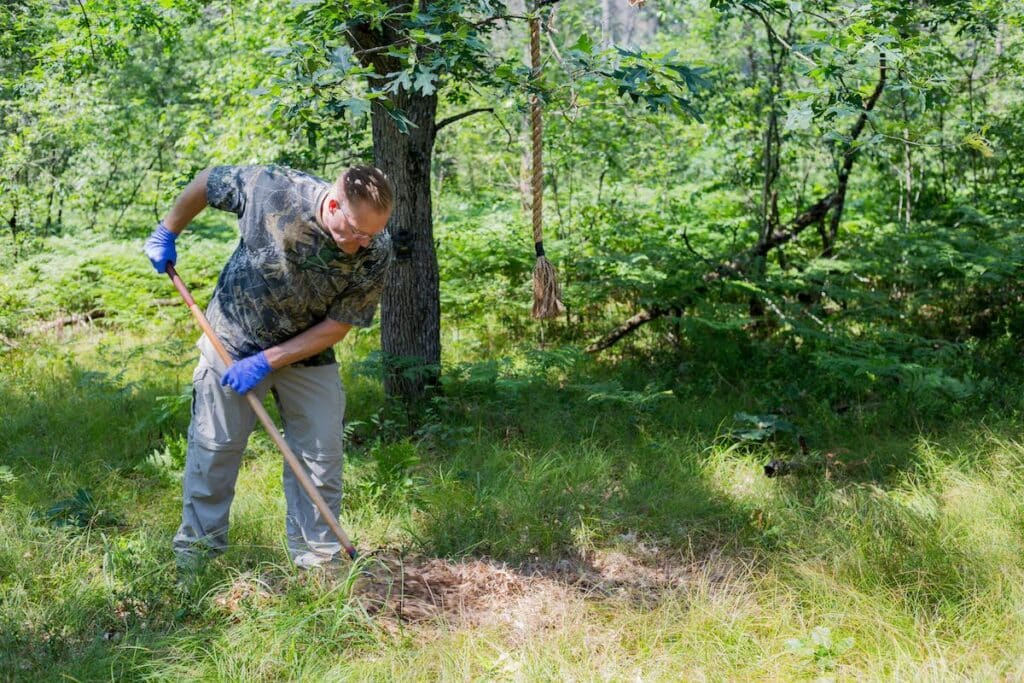
Step 8: Prepare the ground
Underneath the hanging rope, I clear the area of vegetation using a rake that I brought with me and expose bare soil. Or you can use a broken branch nearby. This mimics the natural scrape a deer would make.
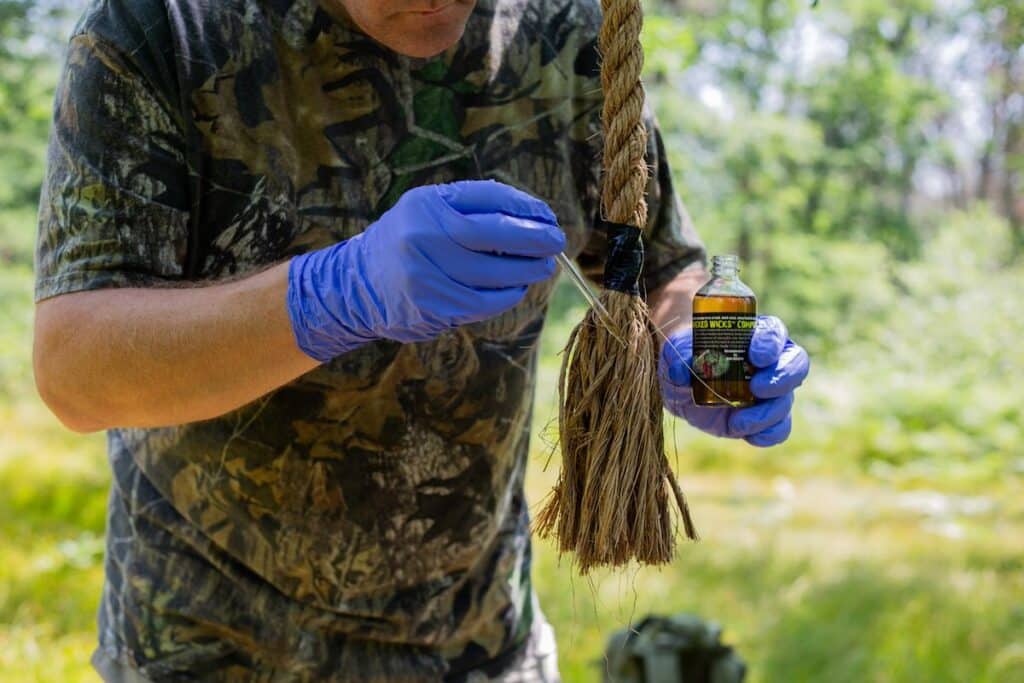
Step 9: Add scent
I apply a preorbital gland scent to the top of rope so it will drip down. This scent simulates the natural communication signals deer leave at real scrapes. I wear gloves to avoid leaving human scent.
Final step: Install a trail camera
This step is optional. But if you can afford a camera, it’s a great tool to confirm that deer use the licking branch made out of rope and your mock scrape. Deer might use it and not leave a lot of evidence they were there. So having a motion-activated trail cam is the best way to learn if your mock scrape is effective. I only check mine every 3-4 weeks so I don’t put pressure on the deer by leaving a human scent near my hunting spots.
Trail cameras at each mock scrape
Setting up trail cameras is essential for tracking and understanding deer activity in your hunting area. I use trail cameras to get an inventory of the deer in the area, helping me identify the sizes of bucks, the number of does, and fawns. This information is crucial for planning your hunts and targeting specific bucks. By reviewing the images from your trail cameras, you can determine which areas are more promising and adjust your strategies accordingly.
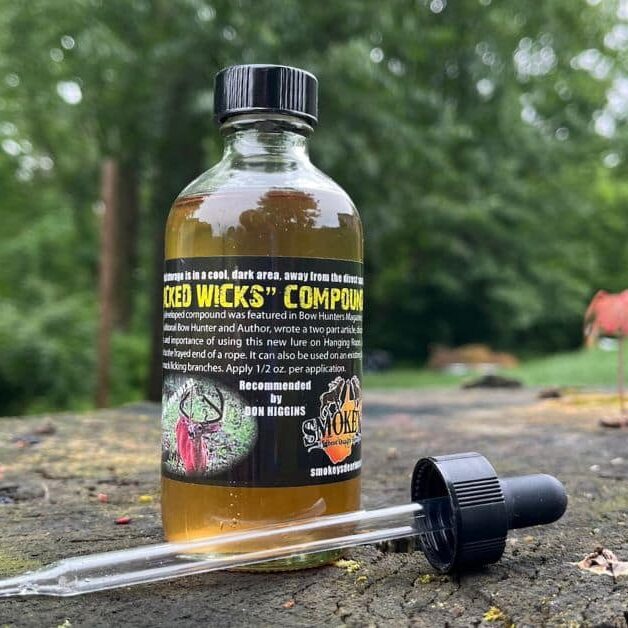
My Success with Smokey’s Wicked Wicks Preorbital Gland Compound
$60.95
This is my first year using Smokey’s Wicked Wicks, and the results are amazing. Deer were attracted to my mock scrapes much faster than when I used other products. Just three weeks after setting up, my trail camera showed deer using the manila rope with Smokey’s buck lure as a licking branch.
HIGHLY RECOMMENDED
Why use Smokey’s Wicked Wicks Preorbital Gland Compound?
Creating a mock scrape using a rope and Smokey’s Wicked Wicks Preorbital Gland Compound has been a valuable tool in my hunting strategy. The compound effectively attracts deer to the mock scrape.
Effective Attraction:
My trail camera footage consistently shows deer, including fawns, does, and bucks, interacting with the scrape. The scent seems to pique their curiosity and encourage them to leave their scent marks.
Durability:
The scent lasts for weeks, even in varying weather conditions. This longevity ensures that the mock scrape remains active and attractive to deer over extended periods. Store in a cool, dark place (out of sunlight). But not refrigerated!
Fast Results:
Within a few short weeks I’ve noticed a significant increase in deer activity around my scrapes. During my maintenance trips about every 3-4 weeks, I’m amazed at how fast deer are being lured to my mock scrape.
Frequently Asked Questions about Mock Scrapes
What is the Best Tree to Make a Mock Scrape?
The best tree for a mock scrape is one located near established deer runs. Choose a tree with low-hanging branches that deer can easily reach. Trees near food sources, like oaks with acorns, are particularly effective. It’s also important that the tree is in an area where deer frequently travel and feel safe. I start by choosing a spot near established deer runs. Deer runs are defined paths that deer frequently travel, often visible due to trampled vegetation.
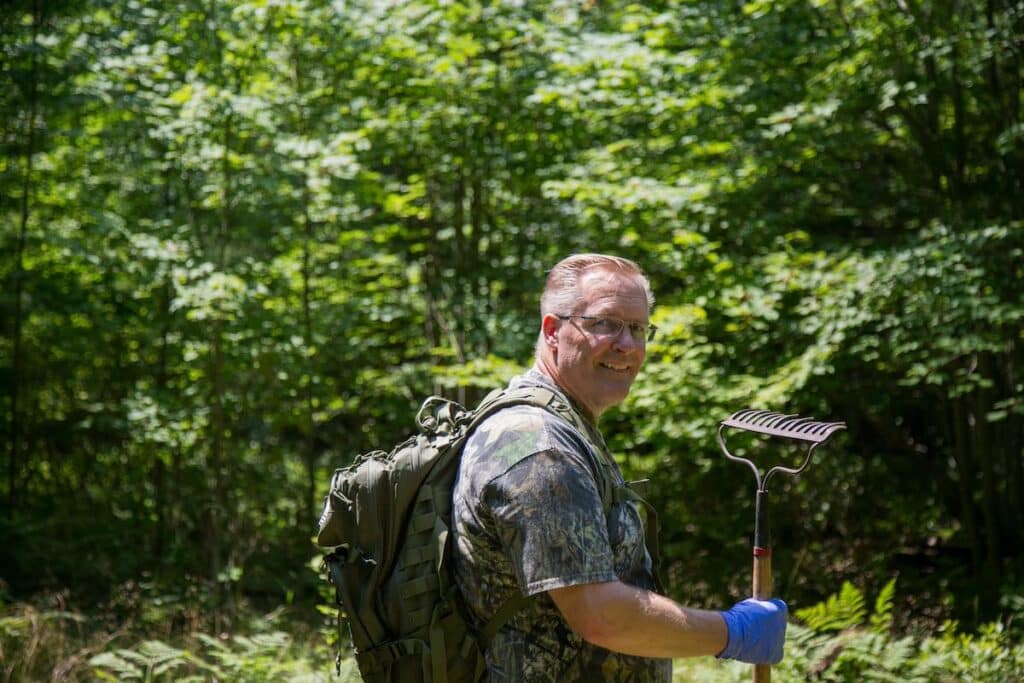
Where is the Best Place to Make a Mock Scrape?
The best place to make a mock scrape is along well-used deer trails or near bedding and feeding areas. Look for locations with natural deer activity and choose spots that are not heavily trafficked by humans to avoid spooking the deer. Placing mock scrapes near your treestand can also help draw deer into the shooting range. Look for trees that are in open areas or clearings. Deer are more likely to notice and use a mock scrape if it’s in a spot where they can easily see and smell it. Avoid areas with dense underbrush or heavy foliage that could obscure the scrape or make it difficult for deer to access. No matter how great your mock scrape preparation is, if there are no deer in the area, it won’t work.
How High for a Licking Branch?
A licking branch should be positioned at about chest height for a deer, typically between 4 to 5 feet off the ground. This height allows deer to easily rub their preorbital glands on the branch and interact with the mock scrape below. Ensure the branch is sturdy enough to withstand repeated use.
How Long Will Manila Rope Last Outside?
Manila rope is durable and can last through multiple hunting seasons if properly maintained. Its natural fibers are resistant to weathering. You’ll want to refresh the rope by applying more pre-orbital gland lure to ensure it remains effective.
How High to Hang Manila Rope for Deer?
Hang the Manila rope so that the end of the rope is about 4 to 5 feet off the ground, mimicking the natural height of a licking branch. This allows deer to easily reach and interact with it, ensuring they leave their scent and mark the mock scrape as a communication point.
What Kind of Rope to Use in a Mock Scrape
Manila rope is my go-to for mock scrapes. It’s durable, natural, and holds scents well. I’ve been using it for years with great results. The fibers of Manila rope effectively retain the scent, enhancing the scrape’s attractiveness to deer.
What Scent to Use in a Mock Scrape
Preorbital gland scent is crucial for a successful mock scrape. It mimics the natural signals deer use to communicate. I’ve found that Smokey’s Wicked Wicks compound works exceptionally well. My trail camera footage often shows deer, including fawns and adult does, interacting with the scrape and leaving their scent marks.
How Often to Freshen the Scent
I make it a point to freshen the scent on the rope every few weeks, especially after rainfall. Regularly adding fresh preorbital gland scent keeps the scrape active and maintains deer interest. Consistency is key, and I’ve seen better results when I maintain the scrapes diligently.
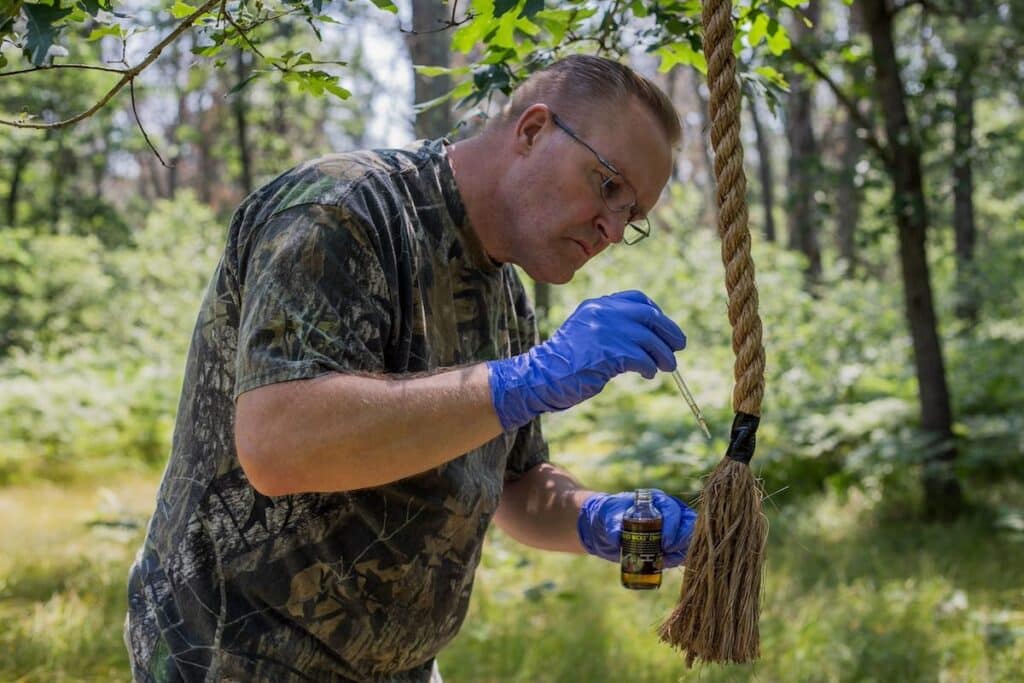
How Many Mock Scrapes Should I Make?
Don’t limit yourself to just one mock scrape. Setting up multiple scrapes in different locations can help you determine which areas are most active and popular with deer. I have one mock scrape at each location I’m researching for hunting. And I make sure it’s within my shooting lane to draw the deer close enough when I’m hunting by bow.
Will a Buck Use a Mock Scrape?
Bucks will use a mock scrape. The combination of visual cues (the cleared ground) and scent signals (preorbital gland scent) can attract bucks. They often investigate the scrape, rub their preorbital glands on the rope, and even urinate on the ground to mark their territory. My trail camera footage has confirmed that bucks, along with does and fawns, frequently interact with the mock scrapes I set up.
What Time of Year Should You Start One?
I start setting up mock scrapes in mid-summer, around July. This gives me ample time to attract deer and monitor their activity before the hunting season begins. Additionally, it is important to avoid going into the woods during May and June because this is when fawns are being born and growing. Staying out of the woods during these months reduces stress on the deer and helps ensure that fawns have a safe environment to grow.
By starting in July, I have enough time to check my scrapes with several weeks in between. This gives the rope enough time to lose some foreign scents and acquire natural scents from the woods. It also helps to make the area feel safe and less pressured so deer will find it.
The early setup helps me inventory the deer population in the area through trail camera observations. If you want to understand all of the basics for hunting whitetail deer, check out my step-by-step guide.
LEARN MORE
Hunting is about experimenting with what works in your area. Keep learning!
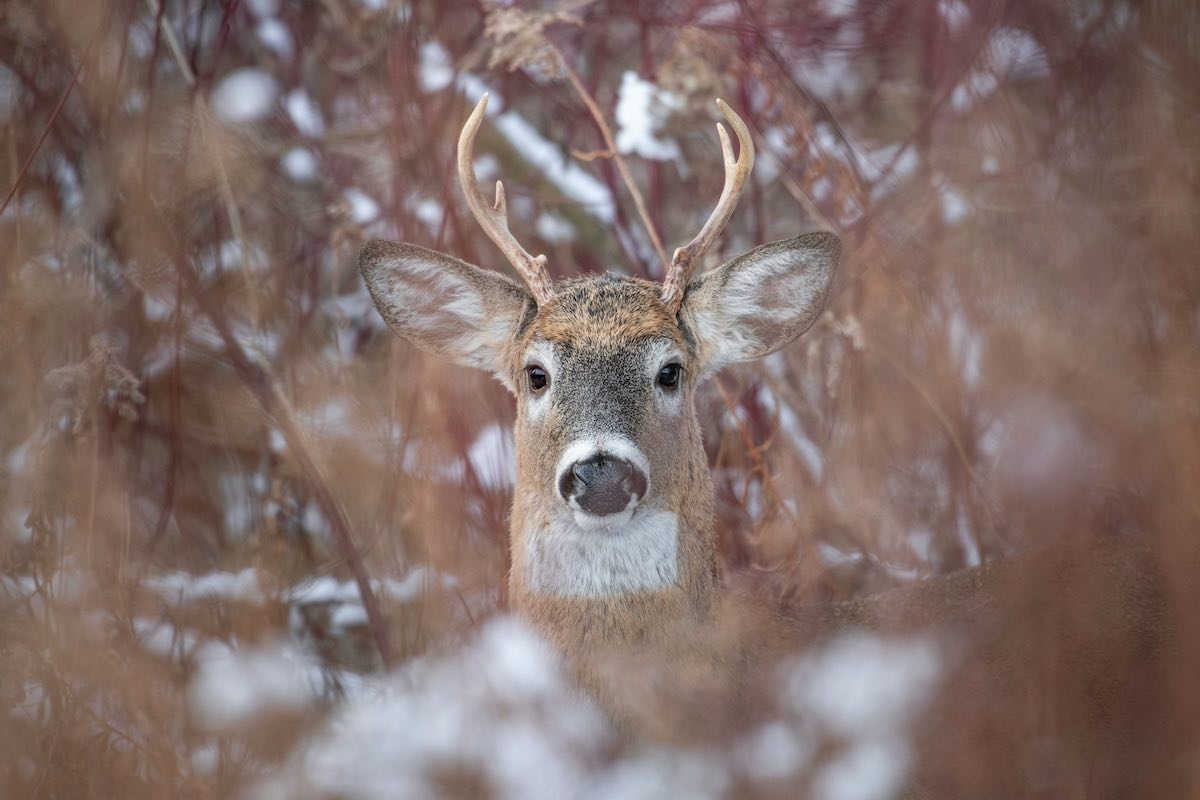
My passion is helping new hunters.
I’m always happy to answer any questions you might have or point you in the direction of resources. If you try Smokey’s deer lure, let me know about your results!

